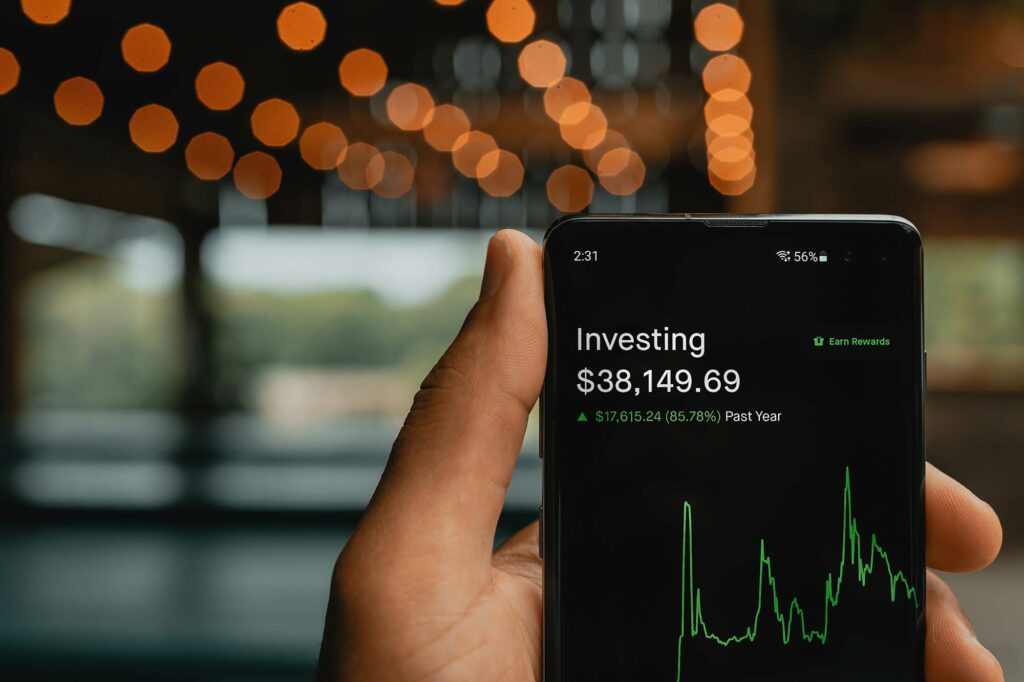Unilever plc (UL) is a leading international consumer goods company, and one of the largest providers of personal care products. Some of its well-known leading brands include Dove, Lifebuoy, Hellman’s, Knorr, Axe, and Magnum.
Because of the business it’s in—consumer staples—Unilever’s stock is often thought of as a “bond proxy.” This status helped propel its shares forward during the 2010s, although that became a much less attractive characteristic at a time of rising interest rates.
Like its peers, Unilever is in a tough fight to maintain its profit margins in the face of significant and persistent food price inflation. But the company has put in a creditable performance year-to-date, with its stock down less than five percent—far outperforming the broader market.
The outperformance partly reflects the price hikes Unilever has handed to consumers.
For example, in the third quarter, the company increased its prices by 12.5% from a year earlier, its highest-ever quarterly rise! Underlying sales accelerated to 10.6% growth year over year—from 8.1% in the first half—driven entirely by price/mix. Nutrition and ice cream led the way, with an acceleration to low-double-digit growth. By geography, emerging markets were strong: year-over-year growth in Latin America was 17.6%.
Unilever achieved higher price growth than analysts had expected, with a smaller volume decline, enabling it to raise its full-year forecast for underlying sales growth to more than 8% from the previous range of 4.5% to 6.5%.
This reinforces the idea that many of the company’s core characteristics work well over the longer term for shareholders. Cementing its pricing power and providing its highly reliable cash flows is the aforementioned portfolio of products for which consumers are willing to pay up.
Change Is Coming
However, many of Unilever’s shareholders are frustrated by the company’s growth rate.
That’s why change at the top is imminent at Unilever. CEO Alan Jope is set to retire next year, having been in the job since 2018.
Jope presided over a period where there was little growth. Going back to 2016—even before he took the reins—annual net income growth at Unilever has averaged a mere 4% per year.
Keep in mind, though, that Unilever is not owned for its growth prospects, but for its reliable cash flows and consistent dividends. Over the past decade, the compound annual growth rate in the company’s dividend per share payouts stands at 6.5%. That is ahead of its peer group, thanks to a succession of above-average increases in the past five years.
Of course, no company can merit the “quality share” name if it cannot show good earnings growth. Unilever still does produce plenty of cash: its current free cash flow yield (the ratio of cash generation to a company’s share price, favored by value investors) is 5.3%. That figure is line with the company’s five-year average and looks reasonable for a quality growth stock.
But shareholders believe it is important that free cash flow per share grows in the years ahead.
To this end, Unilever says that the company’s growth prospects are about to improve. It contends that a reorganization announced in the aftermath of the botched deal for GSK’s consumer health unit, Haleon plc (HLN) will soon start to bear fruit. The company reorganized its business into five segments: Beauty & Wellbeing, Personal Care, Home Care, Nutrition, and Ice Cream.
Activist pressure in the form of Nelson Peltz’s Trian Fund will help as well. Peltz became a board member in May.
Progress seems to have begun already: Unilever’s results have started to exceed analysts’ expectations in recent quarters. And according to Jefferies’ Martin Deboo: “One of the big changes from the first half was that volumes no longer beat expectations across the board in Q3. Unilever was the only company that outperformed consensus.”
What’s Ahead for Unilever
The pressure on consumers the world over will worsen before it gets better. Management teams must balance their intent to pass on cost increases with the risk that shoppers tighten their belts by turning to private-label goods instead. And as interest rates continue to rise, the relative attraction of consumer staples’ own growth rates—already pretty meager in some cases—will continue to dwindle.
But even within the relatively defensive consumer staples space, Unilever has delivered some of the most consistent organic growth of its peer group in recent years. The breadth of the firm’s portfolio across both geographies and product categories limits risk and is a huge positive.
I expect Unilever to benefit from new products, further expansion in emerging markets, and ongoing efforts to improve productivity (cost cutting).
With 58% of reported sales coming from emerging markets in 2021, the company has one of the largest emerging markets footprints of all the global consumer staples manufacturers. This should be a long-term volume driver and profits center for the business.
Unilever is currently less profitable than many of its peers, with an operating margin of 17.0%, which is below the peer average of 22.3%. However, as management reaches its operating margin goals over time, I look for earnings and dividends to grow faster than the industry average and for multiples to expand.
Dividends (current yield is 3.52%) have been the preferred vehicle for returning capital to shareholders, with Unilever having delivered slightly above-industry-average payout ratios of at least 60% since 2012. I expect the company to maintain (and perhaps bump up) its high dividend payout ratio.
Unilever is a buy anywhere around the $50 a share level.
That’s what my old coworker told me years ago. I listened up because he was the most successful broker I ever worked with. And also incredibly lazy. He found a small niche in the market no one talks about and made enough to buy in the most expensive zip code in Maryland. Here’s what he invested in.









